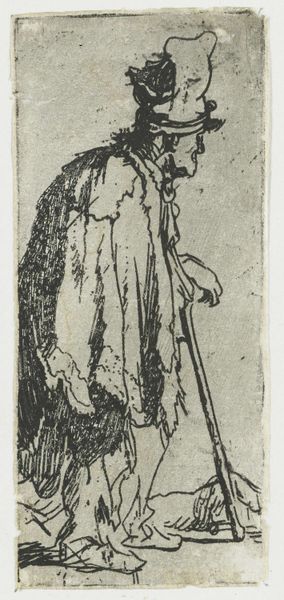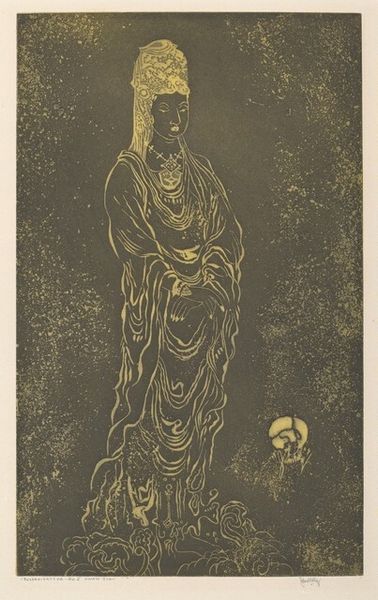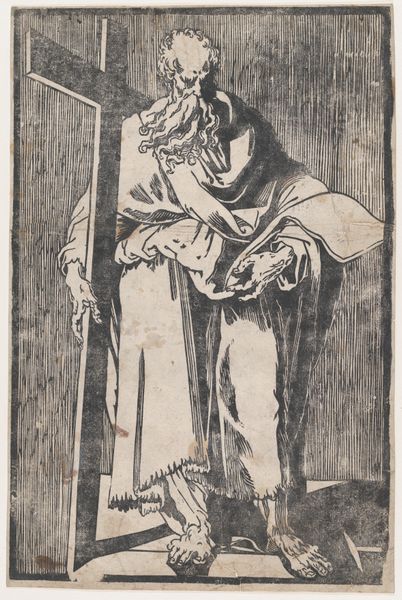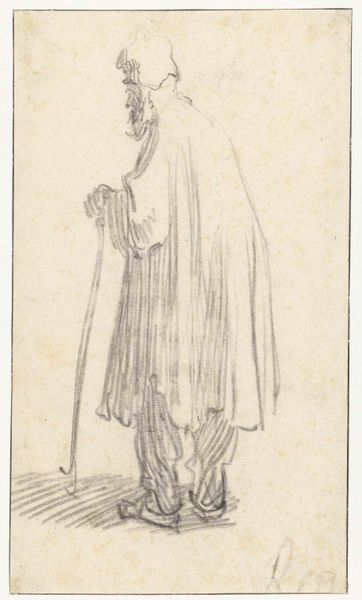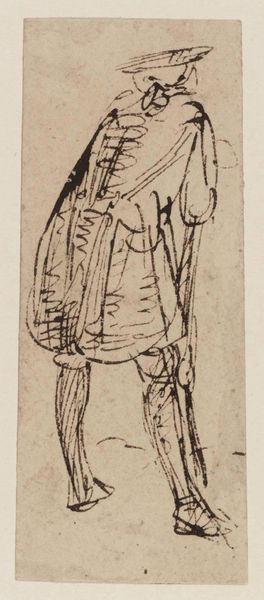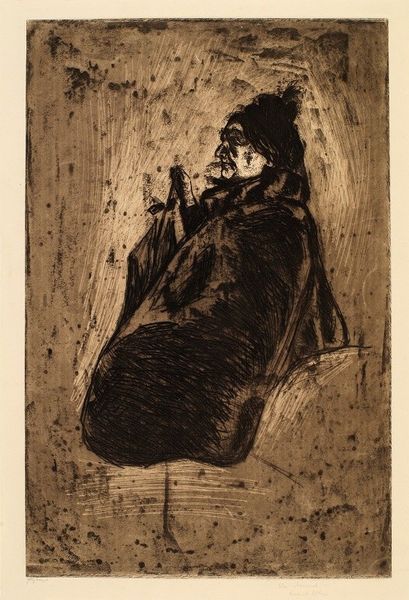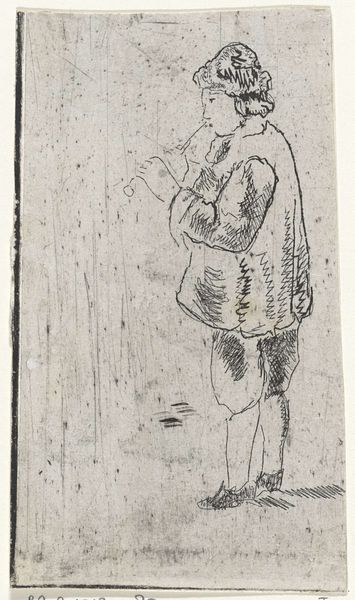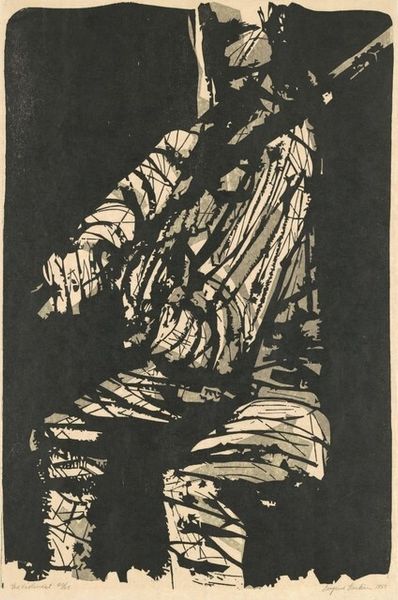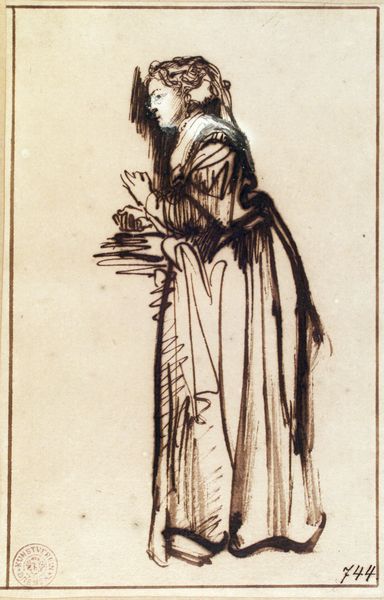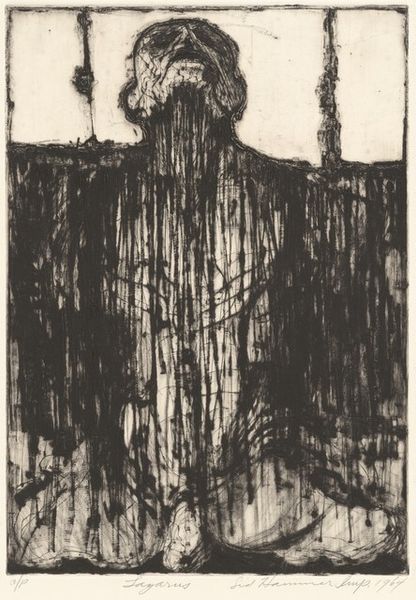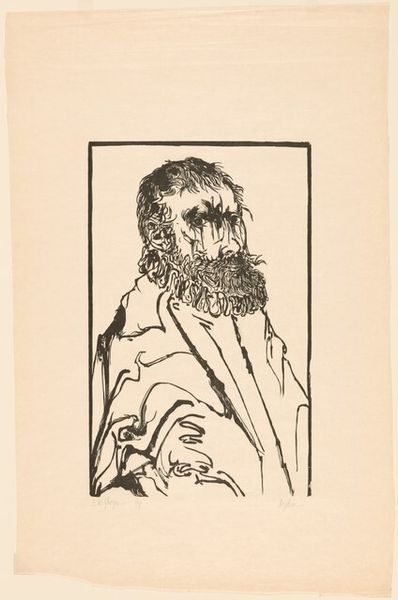
drawing, print, ink
#
portrait
#
drawing
# print
#
figuration
#
ink
#
orientalism
#
line
Copyright: National Gallery of Art: CC0 1.0
Curator: John Melville Kelly's print, "The Sage," immediately strikes me with its dramatic contrast. The white figure emerges from a field of dark ink—a stark and slightly unsettling effect, what are your first impressions? Editor: My first impression is that the figure is illuminated, perhaps by wisdom or some kind of inner light, he appears to be carrying a burden, a woven basket filled with unseen contents. It evokes a feeling of stoic acceptance and quiet resilience, but let’s consider the broader context of Kelly’s artistic practice. He worked in Hawaii, what social and historical narratives were shaping his vision? Curator: Absolutely. Kelly was deeply engaged with depicting local communities in Hawaii, yet "The Sage," done in ink, hints at his engagement with Orientalism, specifically a fascination with East Asian aesthetics. The subject himself—the wise old man—is a figure steeped in cultural meaning. Editor: Indeed. Sages throughout history, whether religious or philosophical, have served as symbols of guidance and profound knowledge. His peculiar hat may have a relation to an eastern practice that isn't familiar. How does Kelly use these familiar symbols to communicate deeper ideas? Curator: He positions the Sage front and center, doesn’t he? And the high contrast elevates him above the surroundings. I see this piece fitting into the larger themes of cultural exchange and appropriation that were rampant during Kelly’s time, reflecting on the way Western artists interpreted and adapted Eastern motifs. Who has the power of definition here? Is it collaborative or exploitative? Editor: It's a complex interplay. The imagery echoes a collective, cross-cultural idea of the “wise elder,” a figure that is represented in a diversity of iconographic practices across a range of spiritual systems, representing timeless values. What about his attributes? We see a small bag near him and what looks like a sword, almost concealed under his robes. What significance can we draw from it? Curator: The bag perhaps indicates earthly connection while the concealed sword symbolizes inner strength or perhaps the hidden realities of life. This, juxtaposed with the delicate, almost fragile lines of the print itself, underscores the balance between inner wisdom and outward appearance. Editor: Thank you. I've never looked at it in that light. Curator: This exploration reveals the work's depth, showing the tension between surface Orientalism and a deeper symbolic language of universal wisdom, knowledge, and power, relevant even today in the dialogue around identity, politics, and the legacies of intercultural exchange.
Comments
No comments
Be the first to comment and join the conversation on the ultimate creative platform.
